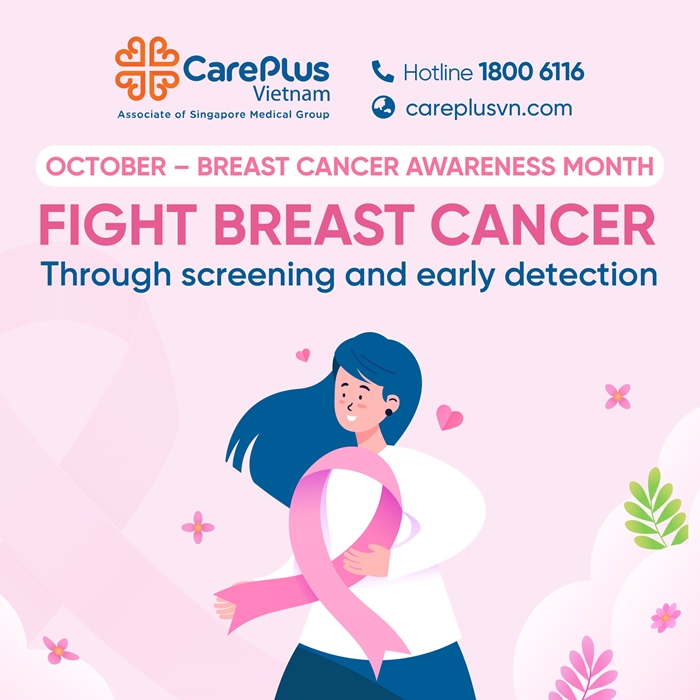OCTOBER – BREAST CANCER AWARENESS MONTH

9/30/2025 4:49:33 PM
⚠️ According to GLOBOCAN 2020, there are approximately 2.3 million new breast cancer cases and more than 680,000 deaths worldwide each year. In Vietnam alone, about 21,555 new cases are reported annually, accounting for 25.8% of all cancers in women.
❗ Although breast cancer incidence is high, early detection and treatment at stage 0 or I can achieve a 5-year survival rate exceeding 90%.
🔎 Therefore, October is recognized globally as Breast Cancer Awareness Month, aiming to:
👉 Raise awareness & promote proactive behavior: Encourage women to undergo regular screening and early detection to protect their health.
👉 Share knowledge & foster collaboration: Disseminate reliable information and connect communities and organizations to collectively fight breast cancer.
👉 Support WHO initiatives: Contribute to programs for early detection, timely diagnosis, and comprehensive care.
👉 Ensure comprehensive & equitable care: Place patients at the center, provide both medical and psychological support, and reduce disparities in healthcare access.
1️⃣ Risk Factors for Breast Cancer
🔺 Breast cancer risk is influenced not only by genetics but also by multiple other factors:
▪️ Genetic mutations, such as BRCA1 and BRCA2, significantly increase risk.
▪️ Family history: Having a mother or sister diagnosed with breast cancer raises susceptibility.
▪️ Prolonged estrogen exposure increases risk.
▪️ Early menarche (before age 12) and late menopause (after age 55) extend estrogen exposure, thereby increasing risk.
▪️ Hormone replacement therapy (HRT) during menopause is associated with a higher risk of breast cancer.
▪️ Lifestyle & environmental factors: age, overweight/obesity, physical inactivity, alcohol consumption, smoking, exposure to radiation, and toxic chemicals.
▪️ Reproductive factors: nulliparity, late childbirth, or not breastfeeding.
▪️ Personal medical history: previous benign breast disease, ovarian cancer, or prior breast cancer.
2️⃣ Early Warning Signs
⚠️ Early-stage breast cancer often has no obvious symptoms, making it easy to overlook. However, the following changes warrant attention:
▪️ Lump in the breast or armpit
▪️ Abnormal nipple discharge, especially if bloody
▪️ Skin changes: thickening, dimpling, or peau d’orange
▪️ Nipple changes: inversion, ulceration, or discharge
▪️ Persistent breast pain or discomfort
▪️ Changes in breast size or shape
▪️ Redness, flaking, or swelling of the breast or areola
👉 If any of these signs appear, consult a healthcare professional immediately for evaluation.
3️⃣ Methods for Early Detection
▶️ Regular screening is crucial for reducing breast cancer mortality. Current methods include:
▪️ Breast self-examination: performed monthly, ideally 5–7 days after menstruation
▪️ Clinical breast examination: performed by a healthcare professional through observation and palpation
▶️ Recommended periodic screening, especially for women over 30:
▪️ Breast ultrasound
▪️ Mammography (X-ray of the breast)
▪️ Magnetic Resonance Imaging (MRI)
▪️ Genetic testing
🎀 Key Message
▪️ Breast cancer is not a death sentence if we act proactively. Early detection can save millions of women each year, with over 90% 5-year survival in the early stages.
▪️ Start with small but impactful actions: perform regular breast self-exams, follow recommended screenings, and maintain a healthy lifestyle. These are the three golden keys to reducing risk, increasing treatment success, and living a healthier, fuller life.
📚 References:
-
GLOBOCAN: Cancer Statistics – PMC